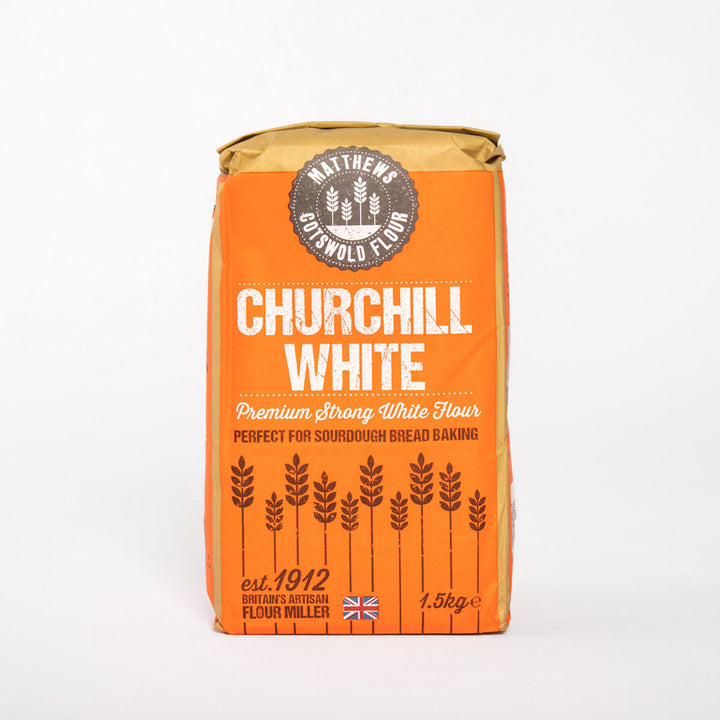Step 5: In the morning, the dough will be grown to double, with an almost smooth surface, maybe with a few bubbles. It will be a heavy, strong dough, easy to handle. Sprinkle an extra layer of rice flour into your banneton. To place the dough into an oval banneton, lift and pull the dough over itself along one side of the bowl; this will be a heavy dough, slightly sticky from the flours. Turn the bowl around completely to the other side and pull the dough on that side again in a line to create a fat sausage of dough. Place the dough, smooth side down, into the banneton, sprinkling extra rice flour down the sides and across the top of the dough. Cover the banneton with the same cover that you previously used for the dough, and place it in the fridge for a minimum of 3 hours, and up to a maximum of 24, to allow the dough to firm up and develop flavour.
Step 6: When you are ready to bake, decide whether you would like to bake in a preheated oven, or from a cold start. If preheating, set the oven to 220C fan assisted or 240C non fan.
Remove the cover from the banneton, place the paper over the top of the banneton and the pan upside down over the top of them both. With one hand under the banneton and one on the pan, turn it all over together to turn the dough out of the banneton and into the pan. Score the dough in one single long line, off centre, holding the blade at a 45 degree angle.
If you preheated the oven, put the lid on and bake for 50 minutes. If using a cold start, place the pan with the dough into the oven, set the temperature as above and set the timer for 55 minutes.
After the baking time for either option, remove the covered pan from the oven. Open the lid to check the loaf. Baking in a lidded pan produces a golden loaf. When you take the lid off, if you feel that your loaf is looking pale, place it back in the hot oven, in its pan, minus the lid, for 5 to 10 minutes to brown the loaf to the color of your choice.
Step 7: Once baked, carefully remove the loaf from the pan, saving the parchment paper for next time, and allow the baked loaf to cool on a wire rack for at least an hour before slicing.
For more details, hints and tips, find Elaine at foodbodsourdough.com
For an alternative, make a round loaf with a mix of Ancient Cotswold Crunch Flour and Matthews Stoneground Strong Wholegrain Flour.
Ingredients:
Follow the process above, using an oval or round banneton.




















